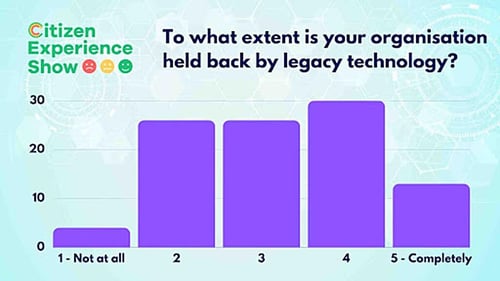Key enablers for multichannel citizen service delivery
Government organisations are faced with legacy and emergent delivery channels which can be complex and expensive to maintain. How can we make service delivery sustainable for all users?
This was the focus of a discussion which featured key executives from the Department for International Trade (DIT), UK Parliament, Crown Commercial Service (CCS) and Pexip, chaired by Government Transformation Magazine's David Wilde.
Enabling effective multichannel delivery

For Kevin Morley, Deputy Director of Customer Service at CCS, understanding the customer is the key enabler for a sustainable multichannel service delivery. Morley said that he learnt this lesson early in life watching his mother work in a small local business, where she knew what her customers’ needs and wants were.
“If you can take that to a macro level in organisations with hundreds of thousands of customers, you cannot lose in terms of what you are delivering as a service,” he said. “If you understand what your customers want, you understand what they want next and you understand their challenges.
“That’s the biggest enabler of any investment, whether it’s digital or non-digital.” 
Knowing where an organisation is going and what they want to transform is also an essential enabler for multichannel service delivery, added Nick Ross, Head of Government at Pexip. During his career, he has been involved in programmes which took so long to deliver that the foundational technologies underpinning them became obsolete before the project was deployed.
“That's a real risk by the very nature of rapid tech developments,” Ross said. “In huge disruption industries like mobile, TV and travel service, design must be approached with agility. Tools can be really expensive to buy and implement, so there needs to be an awareness of platform lifecycles and the risks of building legacy systems.”
Simon Body, Chief Technology Officer at the UK Parliament, agreed that understanding legacy systems - how they can be used and how they are holding back an organisation - is essential to move forward.
It is not always the case of legacy technology that holds up progress, however. Miranda Pottinger, DIT's Deputy Director, Chief Product and Delivery Officer, pointed out that legacy processes and legacy culture are also common obstacles hindering transformational projects.
“On any journey, you start off with a great vision and a great idea,” Body added. “But the dependencies and the hiccups start coming through. What we're trying to do now is make sure that we've identified what we can reuse, and what we need to replace.”

Embedding user needs in the design process
Getting the basics right should be the foundation of any service delivery offering. This includes understanding who you are designing the customer journey for and good data management, Pottinger said.
“For me, it's all about adhering to the service standard principle of asking people to tell us once,” she told Citizen Experience Show delegates. “Whether we do omnichannel, multichannel or single channel, we need to be able to share what we already know about people who have got in contact with us.

“Those interactions might happen months or years apart so we need to be able to pick up that thread very quickly - that’s why data management is really key for us.”
Designing from the perspective of the trader and not from the multiple siloed departments remains a challenge for Pottinger’s team, who is focusing on finding the best ways to collaborate across departments to ensure that user journeys are joined up, regardless of the customer interacting with DIT or any other government organisation.
Using data to better understand the customer is also important for the CCS. During the next 18 months, Morley and his team will be focusing on understanding customer perceptions to come up with better services tailored to the users’ needs.
“We're a £27 billion a year organisation and we have aspirations to go up to £50 billion a year with the same number of staff,” Morley said. “That means we're going to have to listen to our customers and understand what they want from us and invest very strategically and very carefully in our digital portfolio to achieve that.”
Body agreed that listening to the customer is paramount, specially when the customer base is diverse and has different needs. Although the UK Parliament has a dedicated customer experience team, Body said there is always room for improvement, particularly when it comes to making a better use of data and understanding analytics.
At DIT, Pottinger’s team is bringing in the customer perspective to service design by combining in-depth discovery work with agile ways of working. One-to-one qualitative interviews to gather feedback are used in conjunction with prototype building and quick testing of products.
“Getting things out really quickly, failing fast, is something we've been doing particularly around understanding the value exchange, how much data will businesses give us about themselves and their aspirations in order to get tailored support and services back,” Pottinger said.
Recent AB testing of a couple of DIT services currently being used by traders suggests that customers are happy to part with more data than what Pottinger’s team expected if that results in more personalised services for them.
“That data exchange definitely raises expectations,” she concluded.
The Multichannel Citizen Service Delivery panel discussion was sponsored by Pexip. You can catch up with the recording of the session here.





